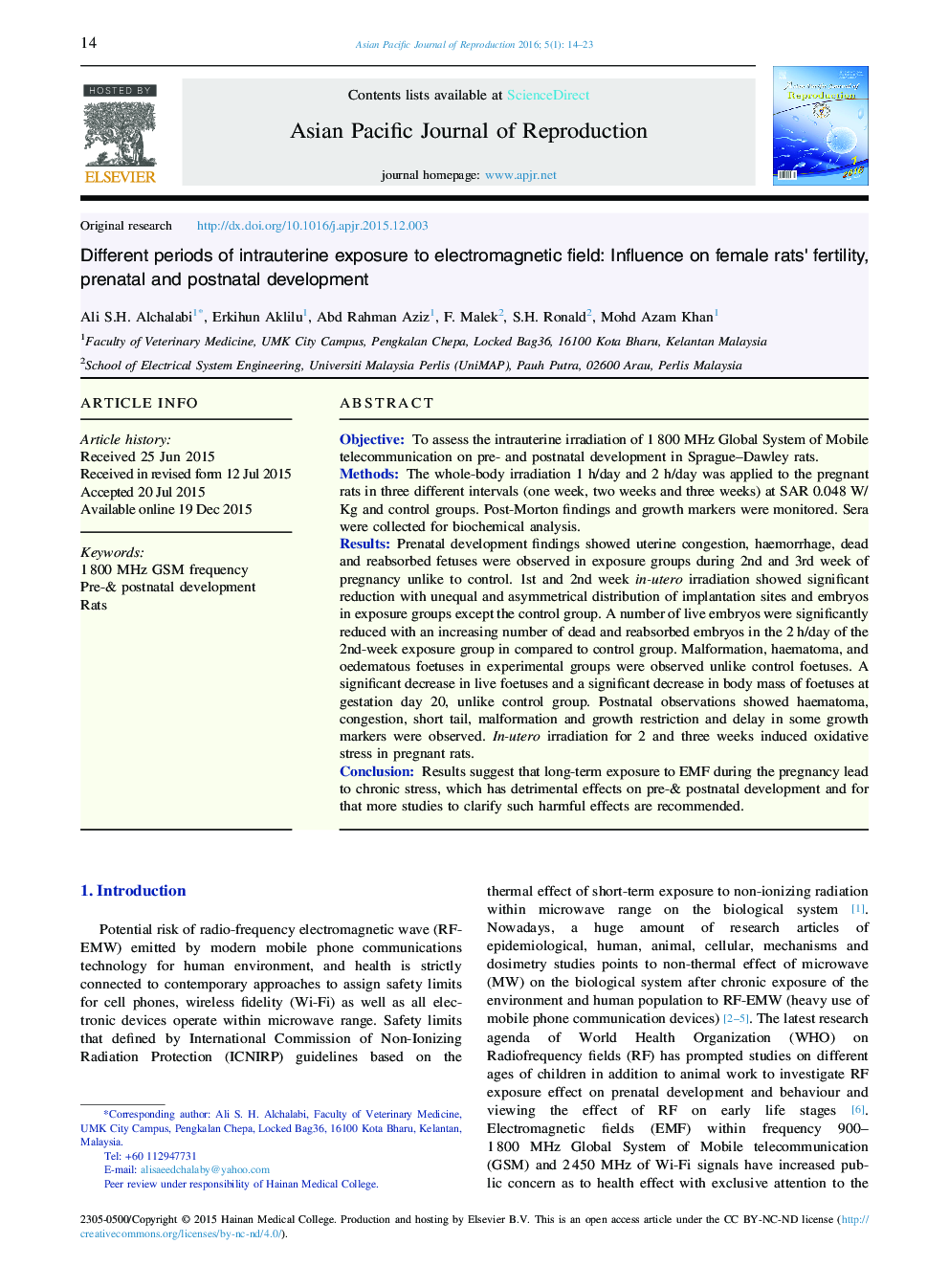| Article ID | Journal | Published Year | Pages | File Type |
|---|---|---|---|---|
| 3453553 | Asian Pacific Journal of Reproduction | 2016 | 10 Pages |
ObjectiveTo assess the intrauterine irradiation of 1 800 MHz Global System of Mobile telecommunication on pre- and postnatal development in Sprague–Dawley rats.MethodsThe whole-body irradiation 1 h/day and 2 h/day was applied to the pregnant rats in three different intervals (one week, two weeks and three weeks) at SAR 0.048 W/Kg and control groups. Post-Morton findings and growth markers were monitored. Sera were collected for biochemical analysis.ResultsPrenatal development findings showed uterine congestion, haemorrhage, dead and reabsorbed fetuses were observed in exposure groups during 2nd and 3rd week of pregnancy unlike to control. 1st and 2nd week in-utero irradiation showed significant reduction with unequal and asymmetrical distribution of implantation sites and embryos in exposure groups except the control group. A number of live embryos were significantly reduced with an increasing number of dead and reabsorbed embryos in the 2 h/day of the 2nd-week exposure group in compared to control group. Malformation, haematoma, and oedematous foetuses in experimental groups were observed unlike control foetuses. A significant decrease in live foetuses and a significant decrease in body mass of foetuses at gestation day 20, unlike control group. Postnatal observations showed haematoma, congestion, short tail, malformation and growth restriction and delay in some growth markers were observed. In-utero irradiation for 2 and three weeks induced oxidative stress in pregnant rats.ConclusionResults suggest that long-term exposure to EMF during the pregnancy lead to chronic stress, which has detrimental effects on pre-& postnatal development and for that more studies to clarify such harmful effects are recommended.
